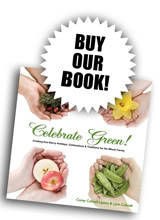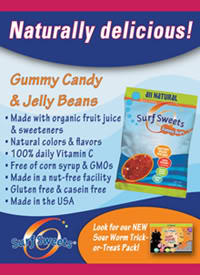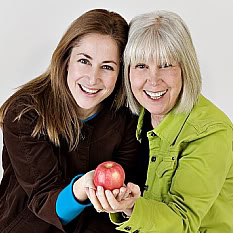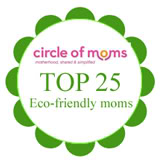Saying goodbye to canned soup
If you’re not aware of the issues with BPA in the lining of cans and associated problems, you’ll want to check out this post by our friend Jennifer Chait on her Growing a Green Family blog.
For the same reason that companies now produce BPA-free bottles for babies (after a lot of pressure), hopefully soon they will be pressured to find a way to get the material out of cans. (Actually already there is a way, big companies just don’t want to get off the BPA bandwagon as they have zillions invested in the status quo.) Meantime…
While I’ve never bought a lot of canned goods as I prefer fresh, then frozen, for many years I was hooked on Progresso soups, especially their minestrone and chicken noodle. Unfortunately, Progresso Vegetable Soup had some of the highest levels of BPA found in cans. Bummer.
Soup has been a staple for me for years. In the winter I sometimes have it for lunch and dinner!
So when the BPA issue reared its ugly head several years ago, I made the decision to quit hot soup from a can cold turkey. (Let me say here that my approach to these kinds of warnings springs not from fear, but from a desire support companies that are doing the right thing or find ways to do it myself.)
It was kind of an emotionally difficult decision—not like swearing never to eat another caramel, mind you—but still, hard.
So what to do if you, like me are a canned soup lover?
I suggest a two-step break-the-addiction process.
Step 1: Soup in a box. Yes, we prefer to avoid all packaging, but if quitting cold turkey doesn’t work for you, boxes lined in foil at least don’t contain BPA and hopefully you live somewhere you can recycle them. Otherwise, channel your inner Andy Warhol and consider them fodder for a great craft project!
Step 2: From so many aspects, homemade is best, and the great part is that even for a lazy, uninterested, non-cook like me (see yesterday’s post), making soup is so simple, it’s next to doing nothing—at least the way I do it.
I aim for simplicity and few ingredients when I whip up my weekly batch. Unlike many people, I prefer to freeze soups, not can (or actually bottle, since that’s what people “can” in nowadays). With this in mind, if I want to add an ingredient that doesn’t freeze well like sour cream, I make the soup, freeze it and when I cook after unfreezing, swirl in the sour cream.
Also, if I’m adding veggies and know I’m going to freeze, I undercook them a bit so that they won’t be gross and limp (like canned green beans), after defrosting and heating.
Other than that, my basic process is:
1. Throw a bunch of veggies into a big pot filled with water. Doesn’t matter what the combo is and they can be a little old, but shouldn’t be nasty looking, watery (assuming they’re not supposed to be) or have any decay on them.
2. Bring to boil, then simmer for 1/2 hour (or more if you want). Veggies should be soft and water should have a color cast to it.
3. Remove veggies with a slotted spoon and add to compost bin. You’ve just made vegetable stock.
4. At this point, add salt if you like. I prefer to add Rapunzel Vegan Vegetable Bouillion in proportion to the amount of stock as per label directions.
4. Add in whatever vegetables you want for the basis of the soup. For instance, maybe I want to make a cauliflower carrot soup. I would add in (approximately) 1 cup of cut up veggie (don’t bother with small, neat cuts, but do try to make pieces approximately the same size) to 2-3 cups of stock, plus whatever seasonings sound good. (Experiment with amount. You can always have whomever eats it, add their own.) Sometimes I’ll add garlic or caramelized onions at this point if I have them on hand.
5. Bring stock back to a simmer and leave until veggies are soft. This depends on the size and hardness of veggies. I’ve found much to my shock that I can’t really overcook them. The flavor remains now matter how long they merrily simmer.
6. The next step is the most time consuming, but unless you’re making a soup with vegetables instead of of vegetables, it’s necessary.(And if you’re making a vegetable soup, do not cook forever. Instead, as stated above, slightly undercook.) Get out your hand held blender (easiest) or Cuisinart and blend the soup to the consistency you prefer. (I like mine lumpy.)
7. Let cool completely.
8. Fill glass jars leaving 1″ of air space at the top. I’ve never had a glass jar explode in the freezer using this method and I’ve been doing this for years using all types of jars from thick walled to pasta sauce jars.
In terms of how much time soup making takes me—I put in no more than ten minutes chopping veggies, blending and pouring into jars. That’s it.
Anyone who says they don’t have time to make soup has no idea how simple it is.
Lynn Colwell and Corey Colwell-Lipson are mother and daughter and authors of Celebrate Green! Creating Eco-Savvy Holidays, Celebrations and Traditions for the Whole Family, and founders of Green Halloween®.

























